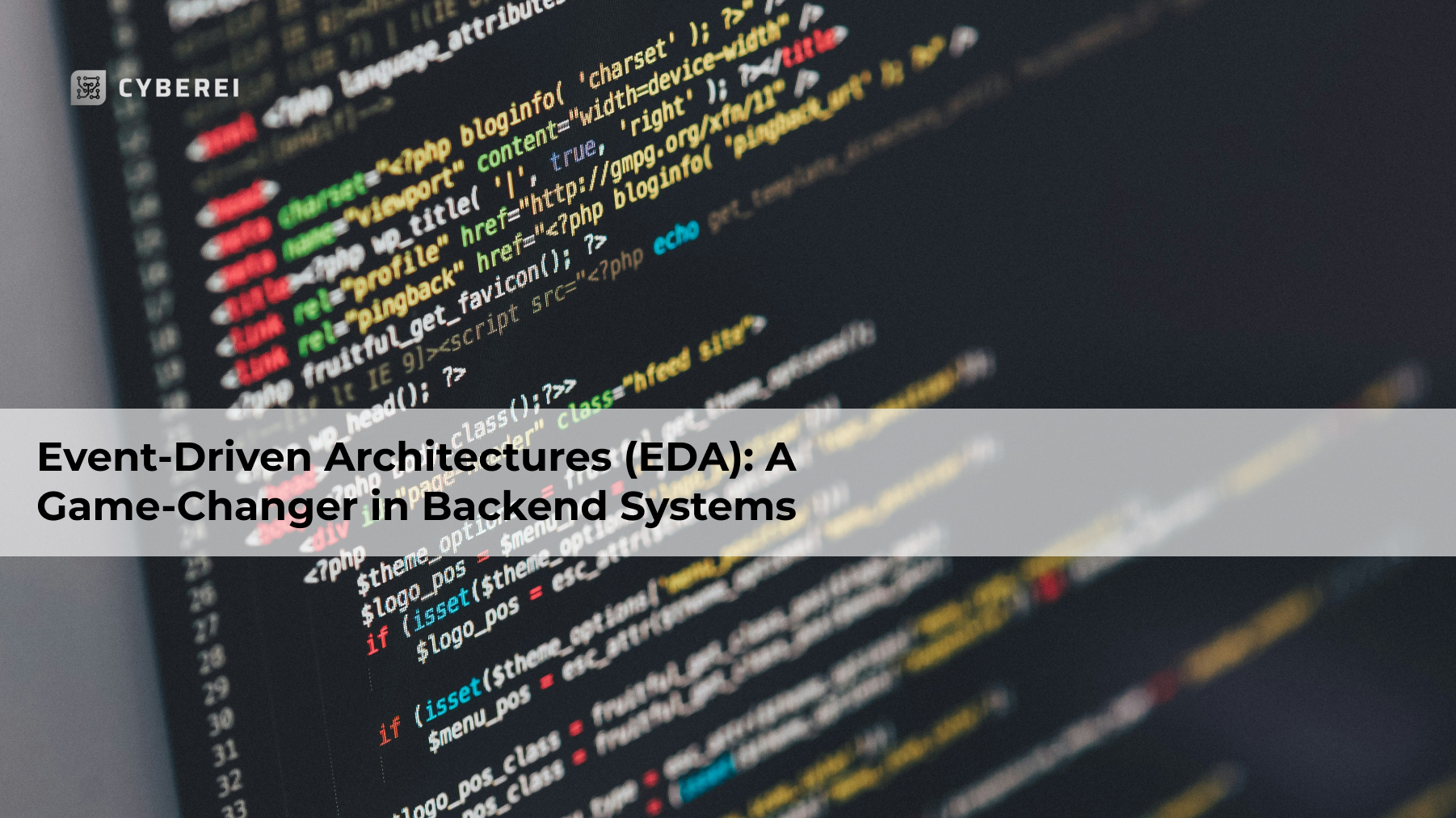Event-Driven Architectures (EDA): A Game-Changer in Backend Systems
Event-Driven Architectures (EDA) are revolutionizing backend systems. This paradigm focuses on asynchronous communication through events, allowing for improved scalability, responsiveness, and real-time processing. It’s particularly transformative in domains like IoT, financial services, and analytics. Let’s dive into the comprehensive details of EDA and understand why it’s gaining prominence in modern backend systems.
1. Introduction to Event-Driven Architectures (EDA)
Event-Driven Architectures represent a design paradigm that processes events asynchronously. Unlike traditional request-response models, EDA reacts to changes or “events” in the system. Events can range from user actions like clicking a button to system-generated signals such as temperature sensor readings.
Brief History and Evolution
EDA originated from the need for more dynamic systems that could handle real-time data and scale efficiently. Over the past two decades, it has evolved with the advent of modern cloud technologies and distributed systems.
Importance in Modern Systems
EDA’s asynchronous nature makes it indispensable in scenarios requiring real-time data processing and responsiveness. Applications such as fraud detection, IoT device management, and live analytics heavily rely on this architecture.
2. Key Principles of EDA
EDA operates on foundational principles that differentiate it from other architectural models.
Event-Driven Design Overview
An event represents a state change or a significant action. EDA designs are built to capture, process, and respond to these events efficiently.
Asynchronous Communication
Events are processed independently, allowing systems to perform without waiting for responses. This non-blocking approach ensures better performance and reliability.
Real-Time Event Processing
Real-time event processing enables systems to react instantaneously, making it ideal for industries like finance and healthcare, where time-sensitive decisions are critical.
3. How EDA Works
EDA relies on a combination of components and mechanisms to ensure seamless event processing.
Components of an EDA System
- Event Producers: Generate events (e.g., sensors, user actions).
- Event Consumers: React to events (e.g., applications, services).
- Event Brokers: Mediate and route events (e.g., Kafka, RabbitMQ).
Event Streams
Event streams capture and maintain sequences of events, providing a continuous data flow for real-time processing.
4. Benefits of EDA in Backend Systems
EDA offers significant advantages, making it a preferred choice for modern backend systems.
- Scalability: Decoupled components ensure systems can scale horizontally.
- Responsiveness: Asynchronous communication enhances system responsiveness.
- Cost-Efficiency: Resources are allocated dynamically, reducing overhead.
- Fault Tolerance: Independent event processing minimizes the impact of component failures.
5. Challenges in Implementing EDA
Despite its benefits, implementing EDA comes with challenges.
- Complexity in Design: Architecting event-driven systems requires meticulous planning and expertise.
- Debugging and Monitoring: Tracing issues in an asynchronous setup can be daunting.
- Potential Latency Issues: Without proper infrastructure, event processing delays can arise.
6. Tools and Technologies for EDA
EDA implementation is supported by robust tools and platforms, including:
- Kafka: Widely used for event streaming.
- RabbitMQ and ActiveMQ: Reliable message brokers.
- AWS EventBridge and Google Cloud Pub/Sub: Cloud-based solutions for event orchestration.
7. EDA vs Traditional Request-Response Architecture
EDA fundamentally differs from traditional models.
- Request-Response: Synchronous, blocking operations with immediate responses.
- EDA: Asynchronous, event-based, focusing on real-time processing.
Use Case Comparisons
While request-response suits static applications, EDA excels in dynamic, data-intensive environments.
8. Use Cases of EDA
EDA’s versatility enables its application across various industries.
IoT Applications
From smart homes to industrial automation, EDA facilitates seamless device communication.
Financial Services
EDA powers real-time transaction processing, fraud detection, and compliance monitoring.
Analytics and Reporting
Organizations use EDA to process data streams for insights and predictive modeling.
9. Role of EDA in IoT Ecosystems
EDA enhances IoT ecosystems by enabling real-time communication between devices and platforms.
- Scalability in Sensor Networks: EDA handles data from millions of devices.
- Fault-Tolerant Systems: Ensures reliable operations even during failures.
10. EDA in Financial Services
Financial institutions leverage EDA for:
- Fraud Detection: Identifying anomalies in transactions in real time.
- Regulatory Compliance: Monitoring transactions for compliance with regulations.
11. Analytics Powered by EDA
EDA fuels advanced analytics:
- Real-Time Data Processing: Analyzing streams as they arrive.
- Predictive Analytics: Forecasting trends using live data.
12. EDA and AI Integration
AI and EDA form a powerful combination.
- Event Pattern Detection: AI algorithms identify meaningful patterns in event streams.
- Predictive Insights: Machine learning models provide actionable predictions.
13. Designing for Scalability in EDA
Key strategies include:
- Load Balancing: Distributing events to avoid bottlenecks.
- Cloud-Native Approaches: Utilizing cloud platforms for elasticity.
14. Monitoring and Debugging EDA Systems
Effective monitoring tools ensure seamless EDA operation:
- Observability Tools: Help track event flow and detect anomalies.
- Metrics to Monitor: Event throughput, latency, and error rates.
15. Future Trends in EDA
EDA is poised to evolve with:
- Edge Computing: Bringing computation closer to data sources.
- 5G Integration: Enabling faster event processing and data transfer.
16. Frequently Asked Questions (FAQs)
What is an Event-Driven Architecture (EDA)?
EDA is a design paradigm focusing on asynchronous event processing.
Why is EDA important in IoT?
EDA supports real-time communication and scalability in IoT networks.
What tools are best for EDA implementation?
Popular tools include Kafka, RabbitMQ, and AWS EventBridge.
How does EDA differ from request-response models?
EDA processes events asynchronously, while request-response requires immediate replies.
What industries benefit most from EDA?
IoT, finance, healthcare, and analytics are leading adopters.
What are the challenges of EDA?
Design complexity and debugging are major hurdles.
17. Conclusion and Final Thoughts
Event-Driven Architectures (EDA): EDA is becoming more prominent in backend systems, transforming scalability, responsiveness, and real-time processing. Its applications in IoT, financial services, and analytics highlight its potential to revolutionize backend systems. As technology evolves, EDA will continue to play a pivotal role in shaping the future of distributed systems.


Tell us about your thoughtsWrite message